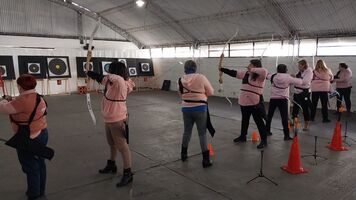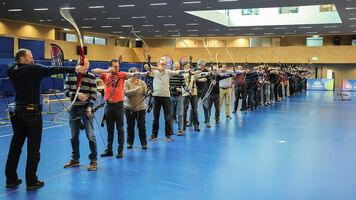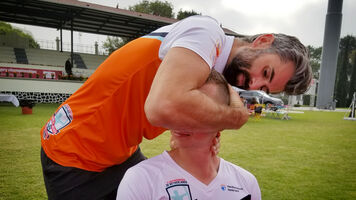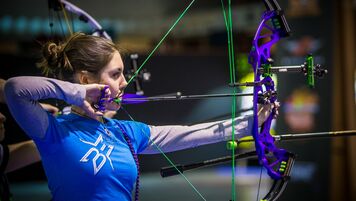Are archers better at maths?
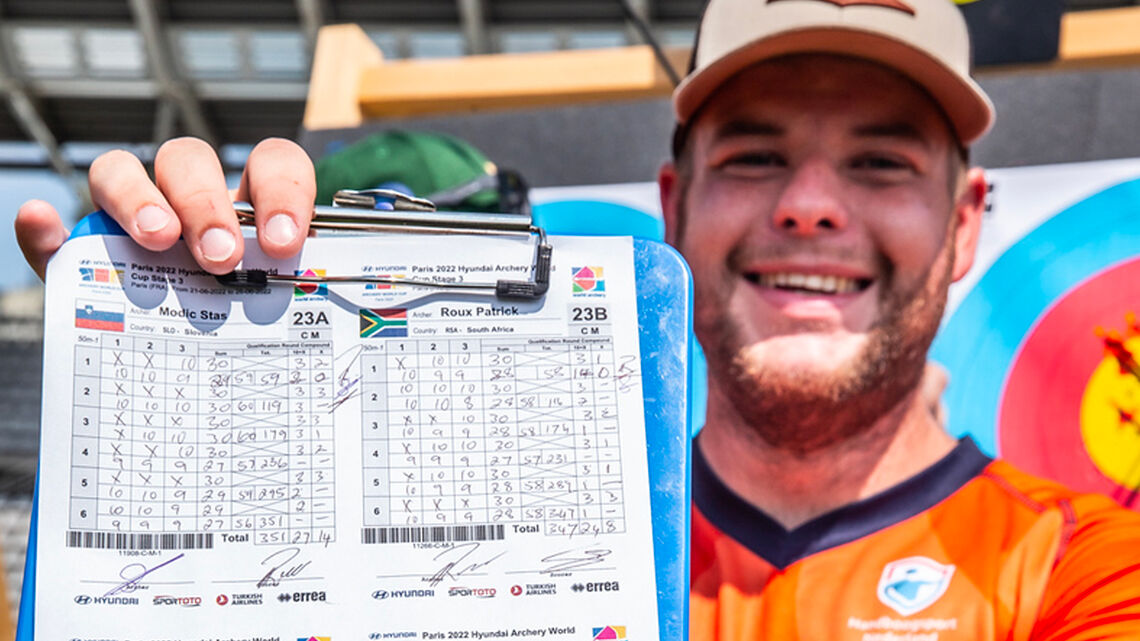
During a 72-arrow qualifying round, archers shoot six arrows at a time. Each arrow is worth 10 to one points (or zero, if it misses). Mathematically, there are 8008 different combinations of arrow values – like five 10s and a nine; three 10s, two nines and an eight; or even all misses.
Eight thousand and eight. Just in one end.
“I think, when you count the scores, it happens automatically in your head,” says world champion Nico Wiener. “You shoot, watch your target and know what the score is.”
“For me, at least, it’s like that.”
Ask Nico what three 10s, two nines and an eight totals and he’ll answer in a flash. Fifty-six.
Ask anyone in the street and it’s almost guaranteed it’ll take a little longer.
“There are a lot of tricks that you learn when you write down a lot of scores,” says Sjef van den Berg, the former Dutch international. “The nine-times-table, for example!”
“When you know that you shoot six nines, it’s 54, you often just work it out from here. Two 10s and one eight – with the rest hitting nine – is one up on a nine average, so 55.
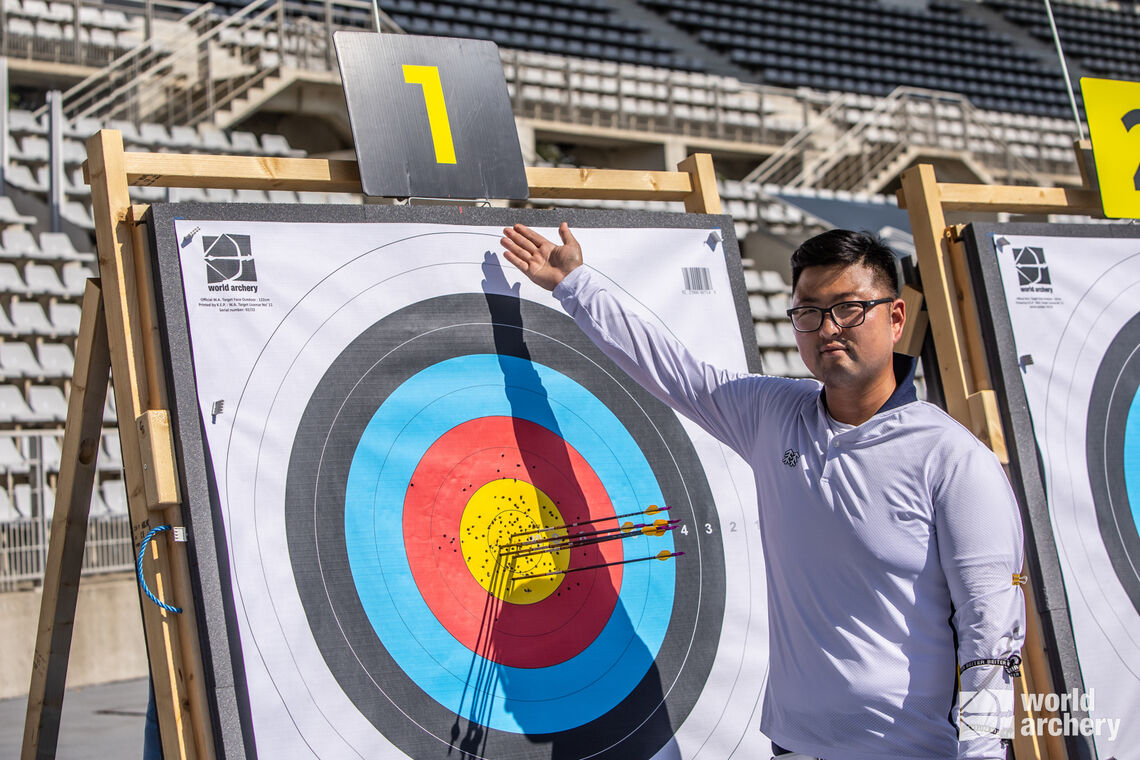
Mike Schloesser has a mathematical background.
“Even before I was an archer, I was pretty good at numbers. I studied accounting,” he says.
But the sport has helped, too.
“You see in darts how quickly they can count,” Schloesser continued. That sport is popular in the Netherlands. “Just like in archery, it gets to a point that you just know what’s up. It’s not really counting. It’s just something that you know.
Canadian Olympian Crispin Duenas has a day job – he’s a maths and physics teacher.
“Any archer who’s adding simple numbers, they probably do it faster than the average person who isn’t doing it every day,” he says. “It’s repetitive, so I often archers will just memorise patterns. And I think scoring archery allows people to see patterns in numbers.”
The practice of the sport itself is built on pattern and repetition – it’s usually called technique or process.
“All aspects of archery make you train your brain,” says Sjef.
“You’re constantly analysing what you’re doing, your rhythm. At least if you’re focused,” he explains. “You shoot and you get your results immediately. And then judging by the results, you need to analyse what you did with your shot to make the arrow go there.
“There’s a lot of retrospective analysis of the pattern.”
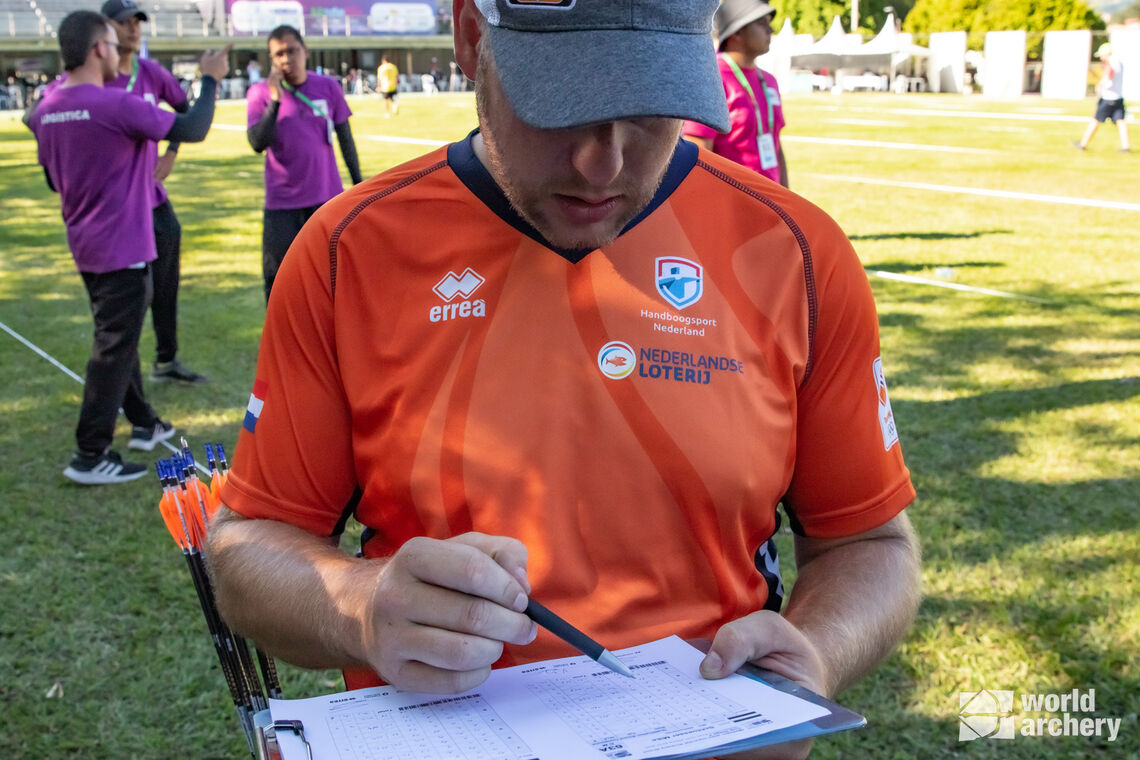
Archery has been used in school programmes to teach kids maths. It’s not just simple sums that they’re learning though, but the ability to control and evaluate – as they understand the process of shooting an arrow.
“You’re always thinking,” says Schloesser. “You can see that archery is a brain sport. It develops your brain because you need to constantly analyse.”
“We also have an autistic member at our club,” continues the world number one. The repetitive nature of the sport has seen archery frequently recommended as a therapeutic activity for people with autism. “Since he started, he has calmed down a lot and his everyday life got a little bit easier.”
The mind games in archery certainly aren’t all numbers.
Visualisation – the creative practice of imagining the perfect shot or specific competition situations – is widely used by the sport’s top athletes.
“We are trained to see our shots before we execute,” says Duenas. “Visualising a movement, a feeling or anything. I think archers can do this better than other people.”
So are archers better at maths? Probably not.
But archery is definitely a sport of the mind.




